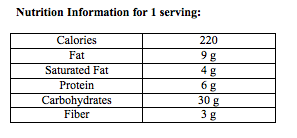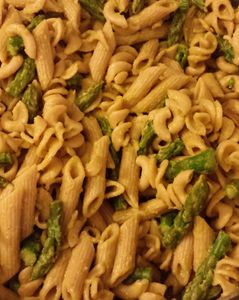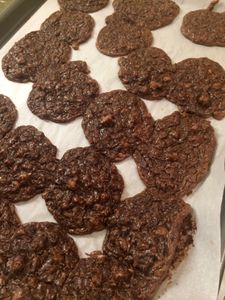By Stephanie Smith, Nutrition student with Journalism focus
For the final test kitchen, one situated during the last week of classes and right in the midst of the beginning stages of finals studying, everyone was looking forward to a break from work to enjoy a tasty dessert.
When we all saw the recipe for a parfait, we were excited for what we would be having, but there was still some uncertainty about how it would taste. Most of us think that parfaits include fruit, granola, and yogurt or ice cream. But this recipe was calling for fruit, granola, and cream cheese.
One of the major questions that people had about the recipe was the pasteurized egg whites—what were they, are they safe to eat without cooking them, would they taste funny in the recipe?
Pasteurization is a process of heating liquid foods to a specific temperature, for a specific amount of time, and then cooling it immediately afterwards. The process slows microbial growth that could occur, otherwise. You may have heard of pasteurized milk, more often than eggs. Milk is usually pasteurized since we drink it as it is, without cooking it. On the other hand, we usually cook eggs, so buying raw eggs is more common than seeking out the pasteurized variety.
 For the recipe, we needed to beat the egg whites until they stiffened. After that we were adding them to the cream cheese mixture, and that was it. We weren’t cooking anything at all, so it’s important to use pasteurized egg whites, to avoid foodborne illness.
For the recipe, we needed to beat the egg whites until they stiffened. After that we were adding them to the cream cheese mixture, and that was it. We weren’t cooking anything at all, so it’s important to use pasteurized egg whites, to avoid foodborne illness.
As for the cream cheese and egg white mixture, though the flavors were great, we all agreed that the texture was a bit strange. To improve the texture, we should have beaten the egg whites for longer, until they were stiffer. We should also have beaten the cream cheese mixture until it was even creamier and less lumpy.
 Other than that, everyone enjoyed the dessert, and went back for seconds, thirds, and maybe even fourths! It was a great treat to end the semester and a great way to kick off finals week!
Other than that, everyone enjoyed the dessert, and went back for seconds, thirds, and maybe even fourths! It was a great treat to end the semester and a great way to kick off finals week!
Mixed Berry and Cream Cheese Parfait
Recipe created by Sargent Choice Nutrition Center dietitian, Rachel Reynolds
Yields 6 servings
Ingredients:
For the oat crunch topping:
½ cup old-fashioned oats
2 tablespoons butter or Smart Balance
1 ½ teaspoons brown sugar
For the cream cheese mixture:
6 ounces light cream cheese
¼ cup sugar
1 tablespoon fresh lemon juice
½ cup pasteurized egg whites
For the Fruit:
2 cups berries of choice
Directions:
For the oat crunch topping:
1. Melt butter in saucepan. Add brown sugar and stir until dissolved. Fold in oats.
2. Cook over medium heat for 2-3 minutes or until oats are golden brown. Remove from heat.
For the cream cheese mixture:
1. Beat together the cream cheese, sugar and lemon juice until completely incorporated and no lumps remain.
2. Place egg whites in cold mixing bowl. Beat on high until stiff peaks are formed. This will take approximately 3-5 minutes. Do not over-mix.
3. Add the egg whites to the cream cheese mixture and fold together.
Assembly:
Distribute 2/3 of the oat topping evenly into 6 parfait glasses (or bowl, if not available). Top the oats with cream cheese mixture, followed by the fruit. To finish, distribute the remainder of the oat topping evenly on each of the parfaits.
Enjoy!

Tweet

Disclaimer: The Sargent Choice blog includes links to other websites only as information to consumers, not as medical advice. When you access an external website, keep in mind that Sargent Choice has no control over its content. Sargent Choice is not responsible for the content found at any of the sites, nor do any links imply endorsement or promotion of the company/organization, its content, services, therapeutic treatment options, or products. Accordingly, you visit any site at your own risk. Sargent Choice is also not responsible for the policies and practices of these sites, such as their Privacy Policy, use of “cookies”, etc. We encourage you to review the privacy policies of each site that you visit through a link on our website.











